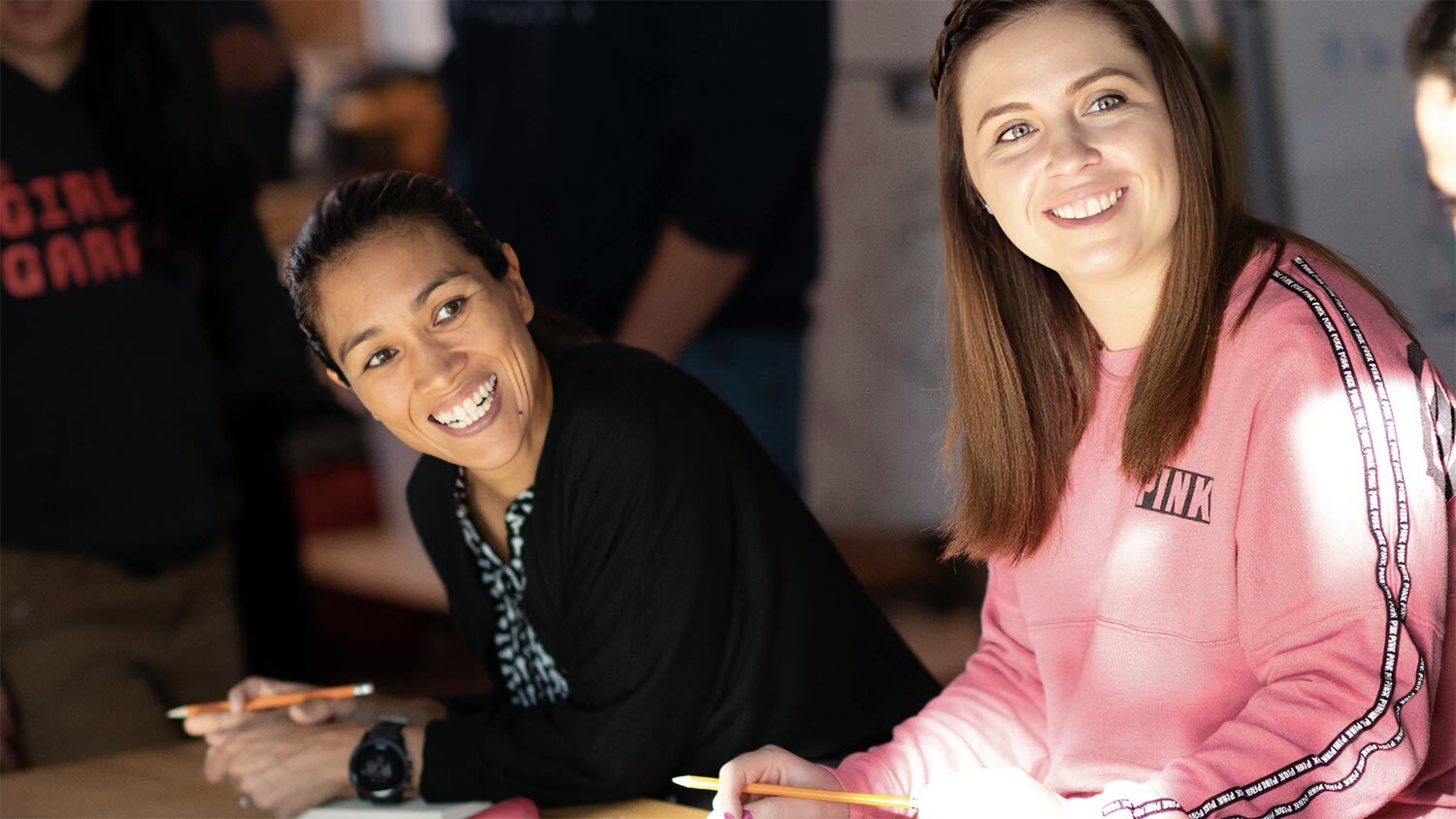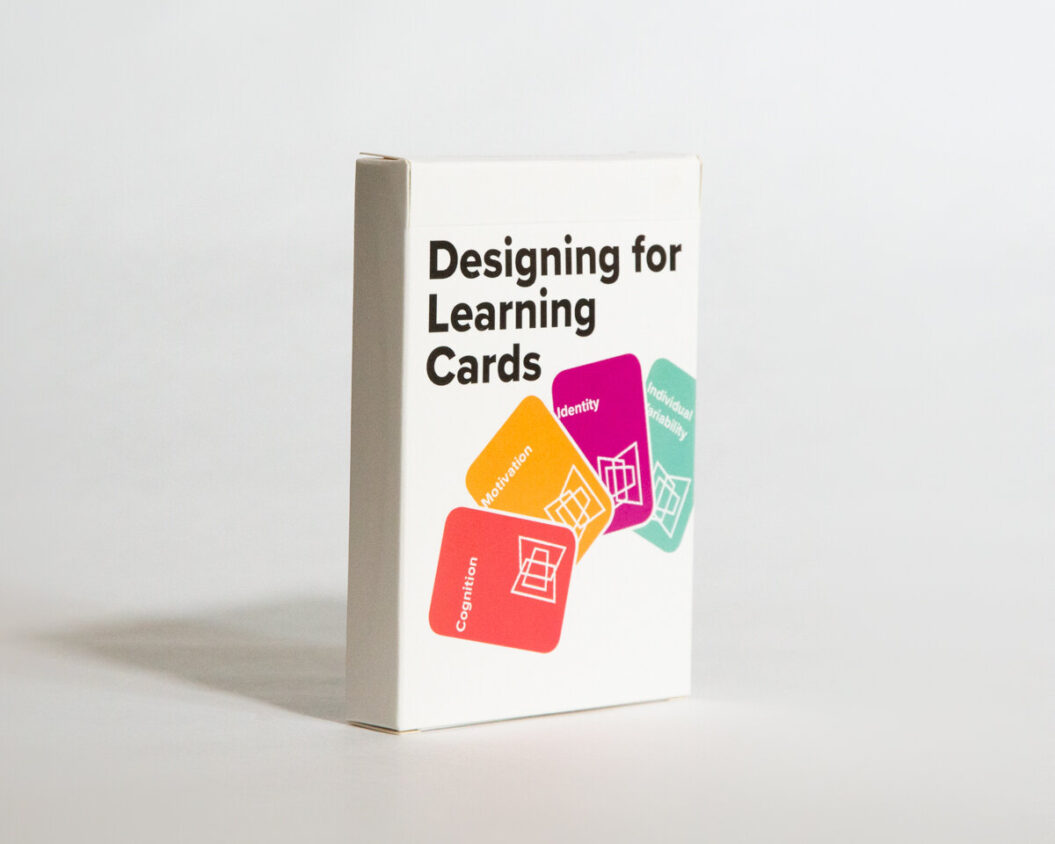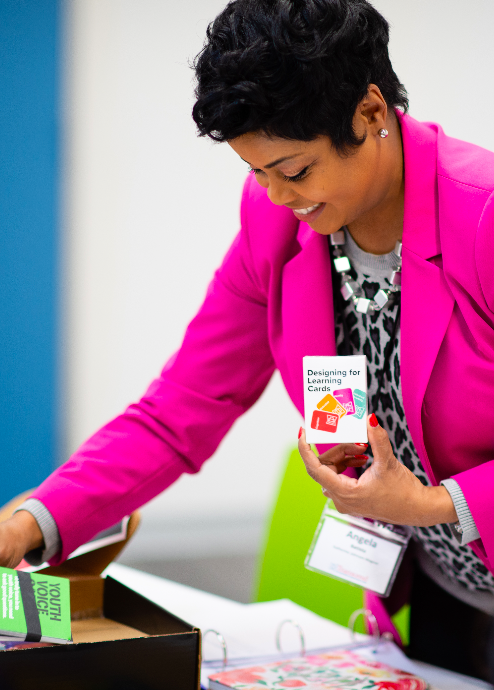How a Simple Set of Cards Can Foster Powerful Learning

How can a simple set of cards help people design powerful learning environments grounded in scientific research?
How concerned should we be that with each successive grade children are in school, they lose interest in academic subjects, most notably science and math?
That schools were initially designed more to produce factory-ready workers, than to cultivate engaged learners for jobs that do not yet exist, should give us all pause.
But when it comes to designing learning environments in which young people actually learn, we only have to ask two questions:
- How does learning happen?
- How can we best create environments that support this?
Designing learning environments takes on many forms, and as Transcend is learning, it can happen in meaningful and unexpected ways. This spring, 10 of Transcend’s Yellow Hats League member organizations in five states served as pilot sites for an exciting and affirming look at how Transcend’s Designing for Learning (D4L) resources are used to deepen understanding about how learning happens and what it looks like in practice. The current D4L resources include a primer that summarize the essence of what’s known about how learning best occurs and a set of activity cards to deepen understanding of the ideas in the primer and support the application of these ideas within learning environments. The 10 sites in this pilot represent diverse contexts, and feature key Yellow Hats League members who raised their hands to try out the D4L tools to help accomplish a range of goals, including ways to:
- Engage students and teachers in the redesign of a high school math curriculum, including how it is scheduled and organized for maximum student engagement and participation;
- Help a human resource team establish common understanding around learning to help in its recruitment efforts;
- Establish common language around learning that can be shared among both student-facing and non-student facing staff to enable positive and productive interactions;
- Craft and audit a charter school application using a research-based learning science framework;
- Invite community college students to reflect on their own learning journeys;
- Engage middle school students in the “language of learning” and how it informs learning experiences;
- Audit approaches to school design and professional development.
It is an exciting group doing important work, and their experiences offer rich evidence of how a simple set of tools can help cultivate dialogue, innovation, and action to optimize learning.
What are the Designing for Learning Resources?

The D4L resources synthesize insights from research related to the roles of cognition, motivation, identity, and individual variability in learning. Transcend created the resources by uncovering, examining, and synthesizing research from cognitive science, neuroscience, education, psychology, developmental theory, and sociology, among other disciplines. Transcend also collaborated with school leaders, educators, and school support organizations to synthesize what they gleaned from the research along with learning from authentic contexts. This endeavor enabled Transcend to identify 16 core principles that undergird how learning best occurs and some initial implications for learning environments. Together these principles highlight the social, emotional, contextual, and individual nature of learning.
I think this is a creative way to get people thinking about design/redesign that is rooted in research.
Consultant to schools
The Designing for Learning Primer synthesizes research related to each of the 16 principles, highlights implications for learning environments, and describes some specific steps schools could take to honor the principles and their implications. The accompanying Designing for Learning Cards offer an accessible, digestible, and actionable way of engaging with the principles to illuminate the physical, academic, social, and emotional dynamics that contribute to how we learn. Each card features one of the 16 principles along with questions that help users interrogate the implications of the principles for the design of learning environments. The cards also feature an accompanying sample activity booklet which features many of the applications originated by our Pilot participants—whom we affectionately term Piloteers.
How did the D4L pilot work?
Once you get school people to turn their attention to the cards and choose which principles they want to use, the doors really start to open.
Team leader
Piloteers used the D4L resources in a range of ways to advance their specific learning or design goals. Prior to using the Activity Cards, some pilot teams first used selected portions of the primer to provide a shared reading experience and common language around learning with colleagues involved in the pilot. Others just used the cards, either over an extended period of time or during a single session. Piloteers convened on the Transcend’s Yellow Hats Slack channel to share their experiences and insights. They also participated in interviews about their work and answered a brief survey about the D4L resources. On average, piloteers spent anywhere from one 20-minute session to several days working with the resources.
What did we learn?

The pilot uncovered unexpected surprises, particularly in how the tools helped enrich understanding among and between educators, non-educators, and students, as well as how they illuminate the importance of diversity, equity, and inclusion in discussions about how learning happens. Importantly, the resources revealed a level of versatility across multiple learning models with a range of uses across both public charter, district, community college, and private school applications:
At CityBridge Education, Andrew Pratt, a Director for School Launch and Innovation, used the Activity Cards with his team as a tool to reflect on the ways in which learning environments often serve as barriers to identity formation and how school design approaches can help eliminate these barriers. The team also used the cards in their work with School Entrepreneurs to invite reflection and dialogue around how learning science informs every aspect of school design and development. As Andrew shared, “The integration of identity principles into the D4L tools weaves issues of racial equity and learning science together in a way that can be profound and unexpected for learners.”
Caleb Collier, Middle School Guide at The Forest School in Atlanta, used the D4L cards with his students to not only make them more aware of the whole concept of learning science, but also to invite them to craft student-friendly language around what it means to learn. This Fall, Caleb’s students will use the cards to interrogate their own learning experiences and will design new in-school and out-of-school offerings as a result.
Peter Herzberg, educational consultant working across the k12 spectrum with foundations and schools, and instructor at Laguardia Community College, has found the D4L principles fruitful in several ways. The nonprofit Change for Kids in NY, which supports Title 1 Elementary schools, made these principles part of a grant application to the State of New York’s Office of Children and Family Services, which has just awarded Change for Kids with a large Advantage Program grant over five years to develop after school programs in their partner schools. Principals of CFK’s 12-client schools last spring also used the D4L cards to articulate their needs assessments for the coming year. At Laguardia, select faculty in the First Year Seminars will invite a highly diverse group of students to reflect on their own learning journeys, especially given the adverse conditions under which many of them had experienced, not only as learners, but also as immigrants and people of color. If this pilot succeeds in a college environment, the use of this learning science work will have an even larger impact.
At Edgecombe Public Schools in North Carolina, Erin Swanson, Director of Innovation, worked with ECPS principals as part of the District’s “Innovation Design Cohort” who convened to engage in design work around particular opportunities they had identified in their schools. They engaged in a brief audit of a classroom they had recently observed together using the Learning Science cards, and then each principal chose a factor that related to a development opportunity s/he had identified Together, they brainstormed ideas using prompt questions featured on the D4L cards. Outcomes from this engagement included the development of a Buddy/Mentor program and greater focus on how to address Social-Emotional Learning needs of staff and students.
Finally, Ami Gandhi, Chief Learning Officer at Chicago-based Intrinsic Schools, brought teachers and students together in a brainstorming session to reexamine Intrinsic’s middle and high school math curriculum so that it best meets the math needs of all students. Together, they used the D4L cards to interrogate Intrinsic’s existing approaches to personalized and “pod-organized” learning through the lens of learning science, and then brainstormed opportunities. Among the many ideas that emerged, Intrinsic is beginning to address how to: rearrange the schedule to expose combinations of math concepts at different intervals; offer financial literacy courses, integrate student conferencing within lessons; and pace learning so that it addresses different learning styles. Ami emphasized how using the cards created a common bond and focus between teachers and students as they worked to identify how learning science principles manifest in practice.
Sending the tools out into the world

The D4L resources are proving to be a powerful set of tools that informs all aspects of system design and iteration including the physical, academic, interpersonal, and developmental dynamics that fuel learning environments. EdCamp will begin distributing 50,000 sets of cards to educators across the country later this month. These educators will facilitate participant-driven professional learning sessions with the cards and other resources provided by EdCamp. Transcend now offers a suite of resources, including the cards, to all educators online so that the principles that undergird learning science can not only help inform all aspects of school design, but activate the power of authentic learning in all of us, everywhere, all the time.
By Transcend Yellow Hat, Dr. Deborah Sawch
Transcend supports communities to create and spread extraordinary, equitable learning environments.

